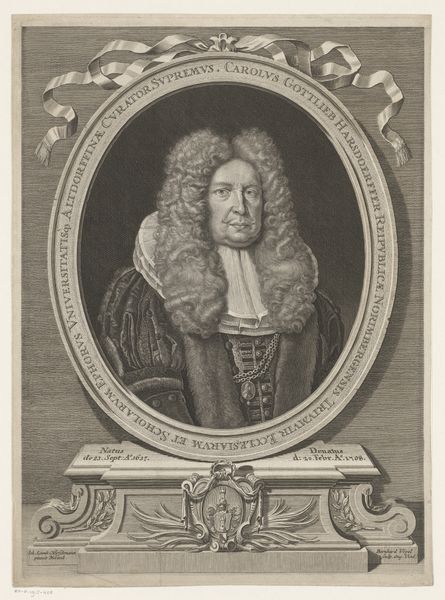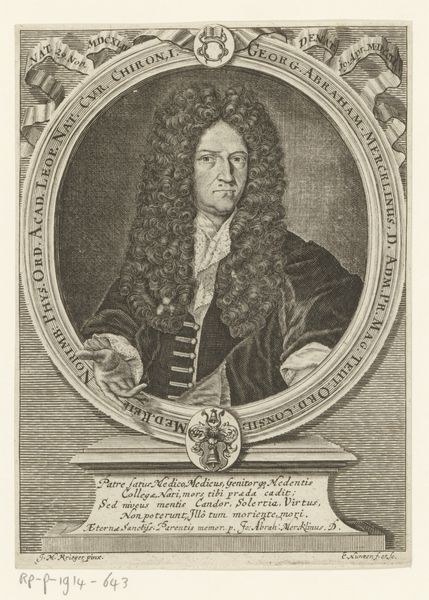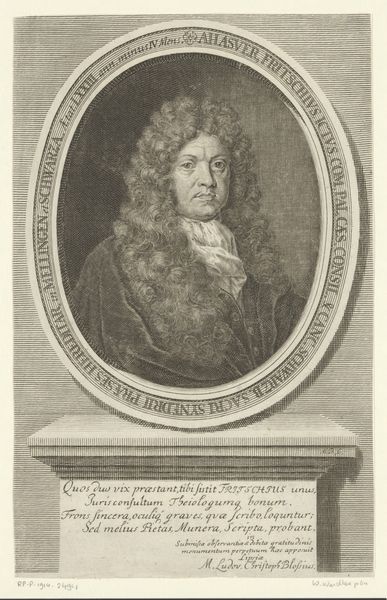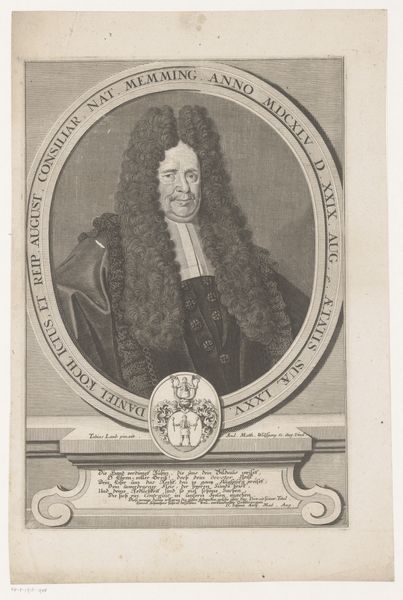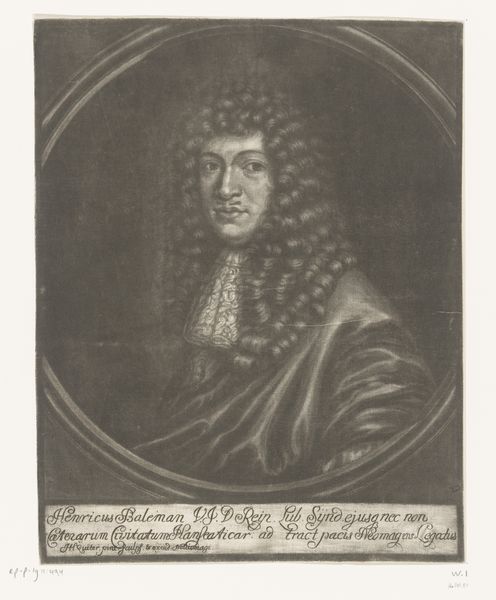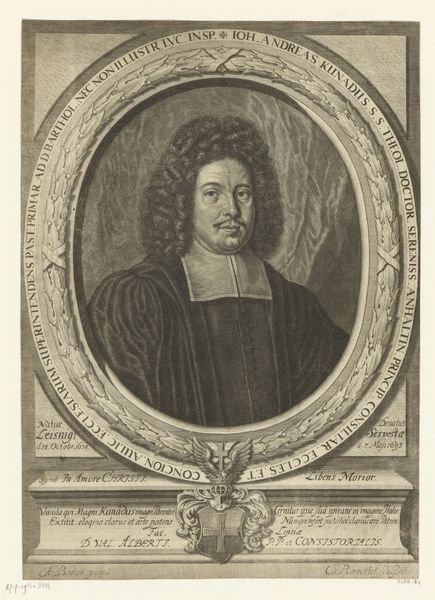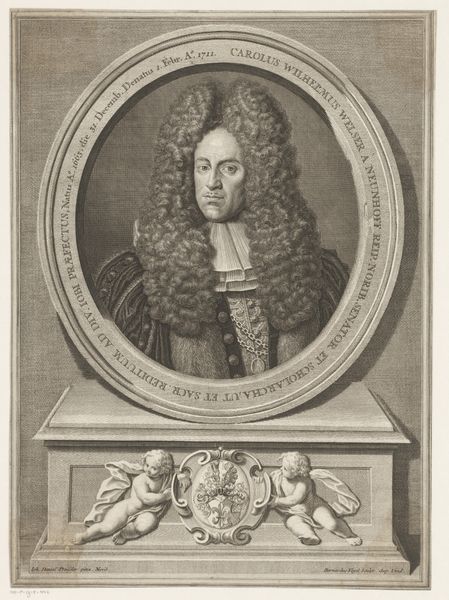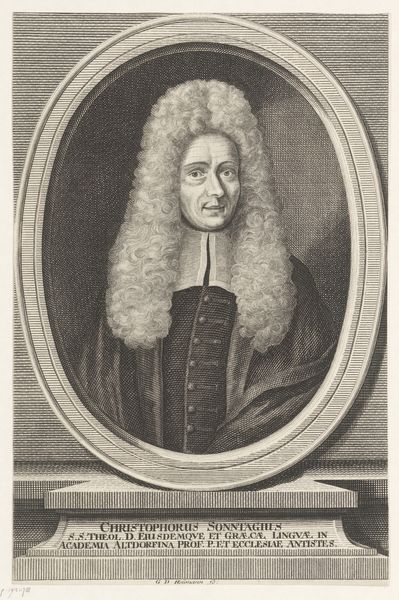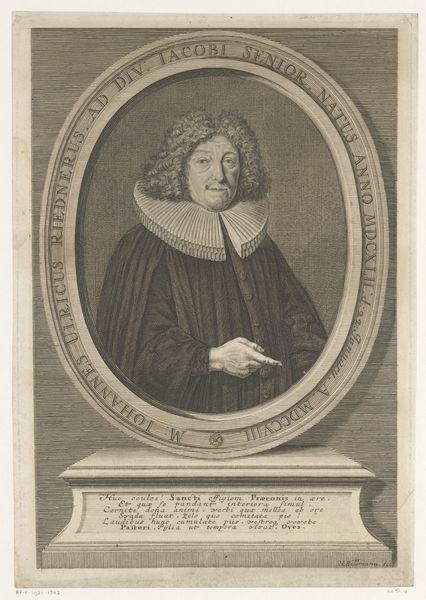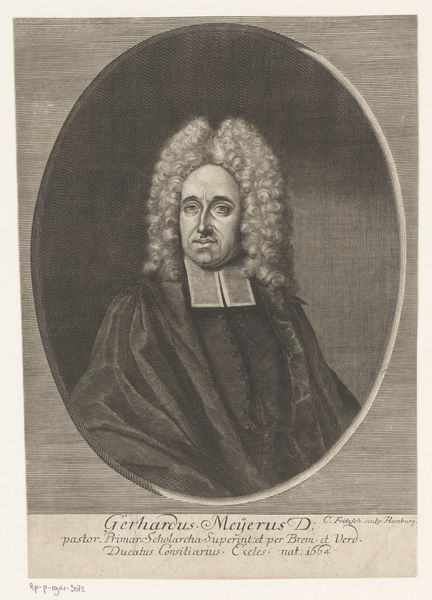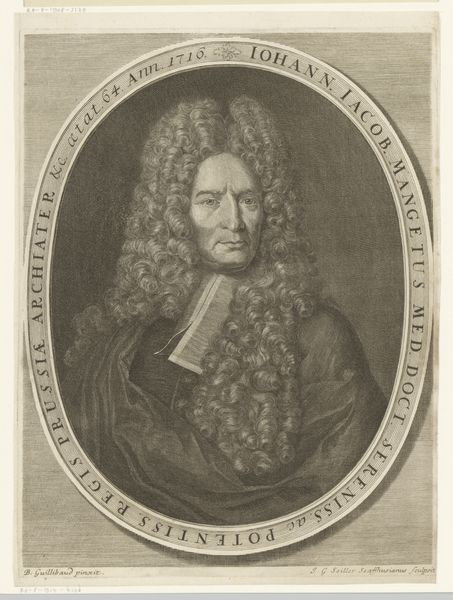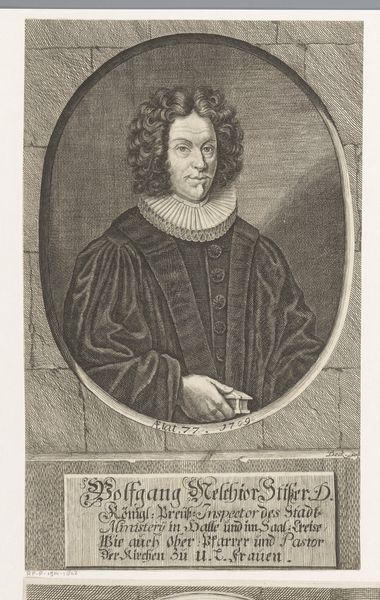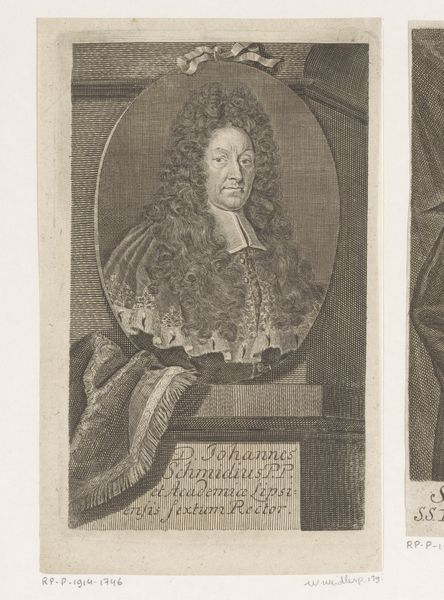
print, engraving
#
portrait
#
baroque
# print
#
old engraving style
#
engraving
Dimensions: height 177 mm, width 134 mm
Copyright: Rijks Museum: Open Domain
Elias Nessenthaler made this engraving of Johann Wolfgang Textor sometime around the turn of the 18th century. Engraving is an intaglio process – meaning that the lines you see were manually incised into a copper plate. The plate would then be inked, and the surface wiped clean, leaving ink only in the recessed lines. The resulting prints, like this one, were valued for their precision. Just look at the incredible detail in Textor’s wig, for example, or the delicate lace at his throat. Nessenthaler would have used a tool called a burin to achieve this level of resolution. Notice that he used a range of marks, from fine hatches to stippled textures, to create the illusion of light and shadow. Engravings like this one were essentially luxury goods, requiring highly skilled labor to produce. And, of course, they also represent the wealth and status of the sitter, who could afford to commission such a likeness. So, when we look at this image, we’re seeing not just a portrait, but a record of social and economic relations.
Comments
No comments
Be the first to comment and join the conversation on the ultimate creative platform.
